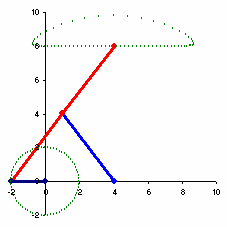Sir Isaac Newton and the 3 Laws of Motion
Sir Isaac Newton first presented his three laws of motion in the "Principia Mathematica Philosophiae Naturalis" in 1686.
Let's start with the First law of Newton, which states: In the absence of external influences, a material body remains in a condition of rest or continues in uniform and rectilinear movement through inertia. This law is also known as "the law of inertia". And what is inertia? As a matter of fact, it describes the ability of a body to preserve the initial parameters of its own motion.
The formula of the Newton's second law is: F = m • a, where F = the size of the external force, m = size of inert mass, a = size of the acceleration of a body. If we rewrite this as: a = F / m it becomes obvious, that the larger the mass of a body, the greater external effort is required to apply the same acceleration to it. Actually, inertial mass here acts as a measure of its own internal resistance to the influence of the external force.
The third law of Newton states that any external influence on a body causes an equal and opposite action from the body. In other words, to every action there is always opposed an equal reaction: or the mutual actions of two bodies upon each other are always equal, and directed to contrary part.
Let's start with the First law of Newton, which states: In the absence of external influences, a material body remains in a condition of rest or continues in uniform and rectilinear movement through inertia. This law is also known as "the law of inertia". And what is inertia? As a matter of fact, it describes the ability of a body to preserve the initial parameters of its own motion.
The formula of the Newton's second law is: F = m • a, where F = the size of the external force, m = size of inert mass, a = size of the acceleration of a body. If we rewrite this as: a = F / m it becomes obvious, that the larger the mass of a body, the greater external effort is required to apply the same acceleration to it. Actually, inertial mass here acts as a measure of its own internal resistance to the influence of the external force.
The third law of Newton states that any external influence on a body causes an equal and opposite action from the body. In other words, to every action there is always opposed an equal reaction: or the mutual actions of two bodies upon each other are always equal, and directed to contrary part.




Comments